If you're looking to build or upgrade a high-end gaming setup in 2025, you’ll inevitably face one critical decision that will define your entire visual experience. It's not your graphics card or your CPU, it’s your ultimate portal into your pixelated realms. Today, that choice comes down to one massive debate: Mini-LED vs. OLED.
Either one of these technologies could deliver the most immersive, vivid, and reactive gaming experience yet. Marketing for both will tell you they are the undisputed champion. The trouble is, they get their dazzling results in essentially dissimilar manners, and the practical distinction between them is big. Is mini led better than oled, or is it the other way around?
This guide is to slice through all the noise. We'll give you our top monitor picks right at the start, then dive deep into the technology behind them. By the end, you’ll know exactly how each works, their respective strengths and weaknesses, and be able to make the perfect choice for the games you play, the room you play in, and your budget.
Table Of Content
- Our Top Gaming Monitor Picks for 2025
- What is Mini-LED? The Brightness Champion
- What is OLED? The Contrast King
- Head-to-Head: Mini-LED vs. OLED Comparison
- The Verdict: Who Should Buy Which Monitor?
- FAQs
- Conclusion: Which Will You Choose?
Our Top Gaming Monitor Picks for 2025
For those who want the quick answer, here are our top monitor recommendations. We'll explain why these technologies are so unique in the upcoming sections below, which will make you understand why these specific models are our top choices.
Best Overall Mini-LED: BenQ MOBIUZ EX321UX
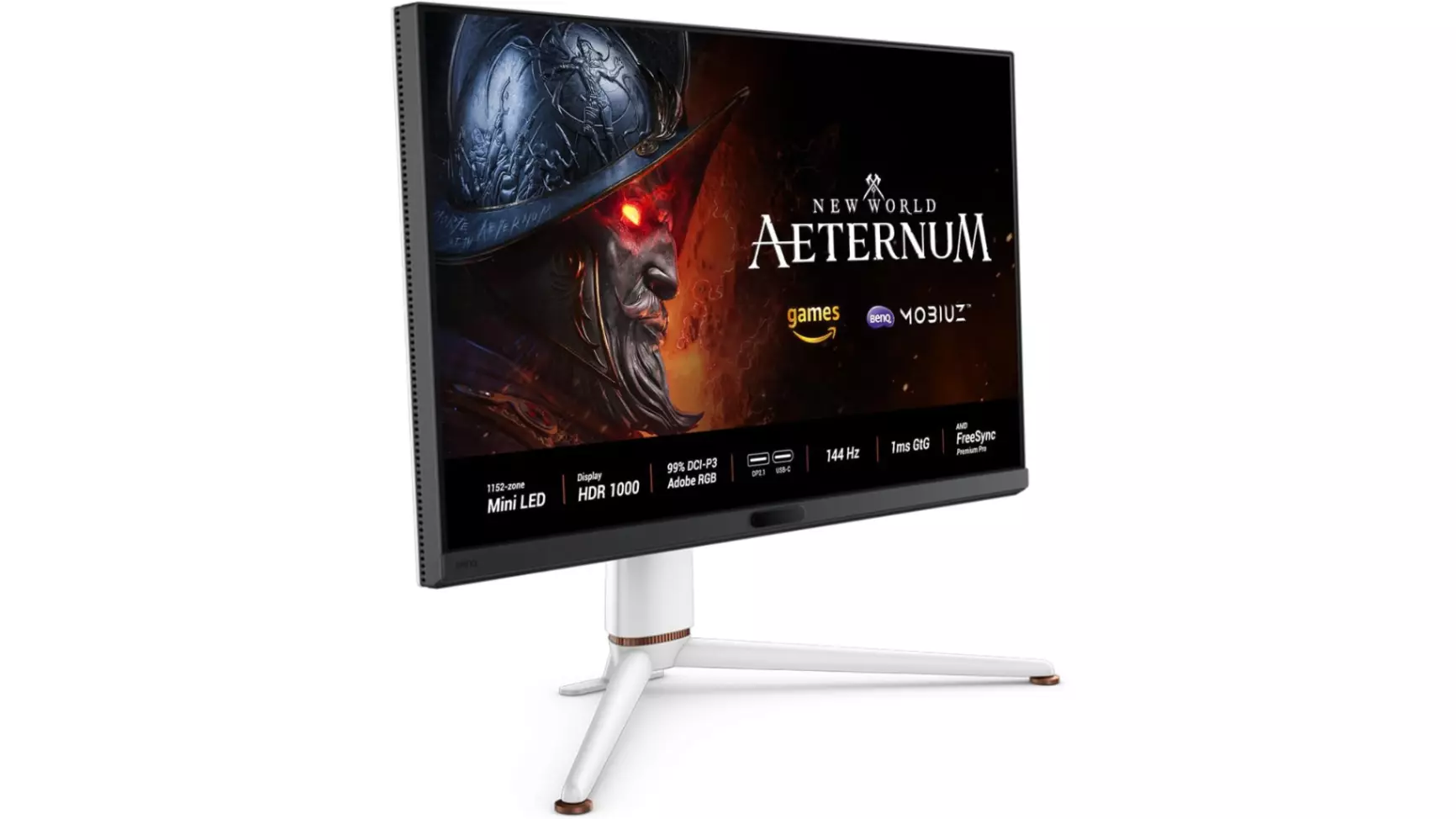
This BenQ MOBIUZ EX321UX represents the peak of what a 32 inch 4k mini led monitor can achieve. It’s an amazing all-around panel that delivers on the ultra-bright, eye-popping promise of HDR without compromising gaming performance — one of the best overall choices for a versatile setup.
Pros:
- Incredible peak brightness for stunning HDR that pops.
- Excellent for gaming in well-lit or bright rooms.
- Zero risk of screen burn-in from static game HUDs or desktop use.
Cons:
- Black levels are exceptional but not perfect like OLED.
- Slightly slower pixel response time (though still excellent for most gamers).
This is the 4K powerhouse you’ve been looking for. If you game in a bright room and demand stunning, in-your-face HDR without the worry of burn-in, the BenQ MOBIUZ is your answer. It’s the perfect, worry-free 4K centerpiece for both AAA gaming and productivity.
Check the latest price and see what true HDR brightness looks like [Click Here].
Best Overall OLED: MSI MPG 321URX QD-OLED
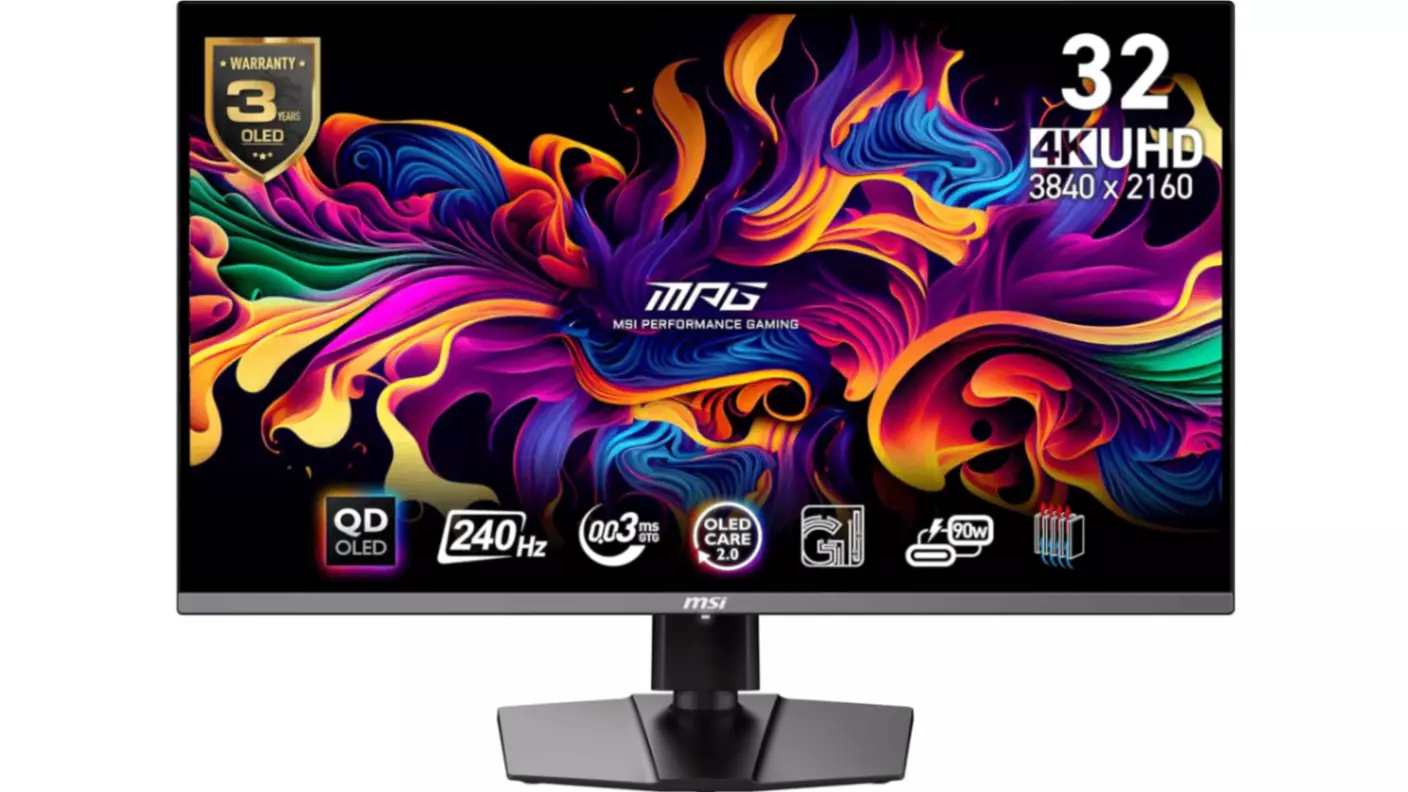
The MSI MPG 321URX QD-OLED is a masterpiece and our pick for the best oled pc monitor on the market. As a premium 4k oled monitor, it pairs a crisp 4K resolution with a buttery-smooth 240Hz refresh rate (far exceeding the 4k 120hz oled monitor standard), making it a top-tier choice for 4k oled monitor gaming. Its QD-OLED panel technology offers the best of all worlds.
Pros:
- Perfect, infinite contrast and true inky-black levels.
- Instantaneous response time for zero motion blur or ghosting.
- Fantastic, vibrant color saturation that makes games look stunning.
Cons:
- Lower peak brightness compared to the top Mini-LEDs.
- A (very low) theoretical risk of burn-in over its lifespan.
If you're a cinematic gamer who craves perfect blacks and infinite contrast, the MSI MPG 321URX is your endgame. The combination of 4K sharpness and a 240Hz QD-OLED panel delivers a picture so clear and fluid, you'll feel like you're inside the game. This is the new standard.
See the stunning visuals for yourself and check availability here [Click Here].
Best Value Mini-LED: Cooler Master Tempest GP27Q
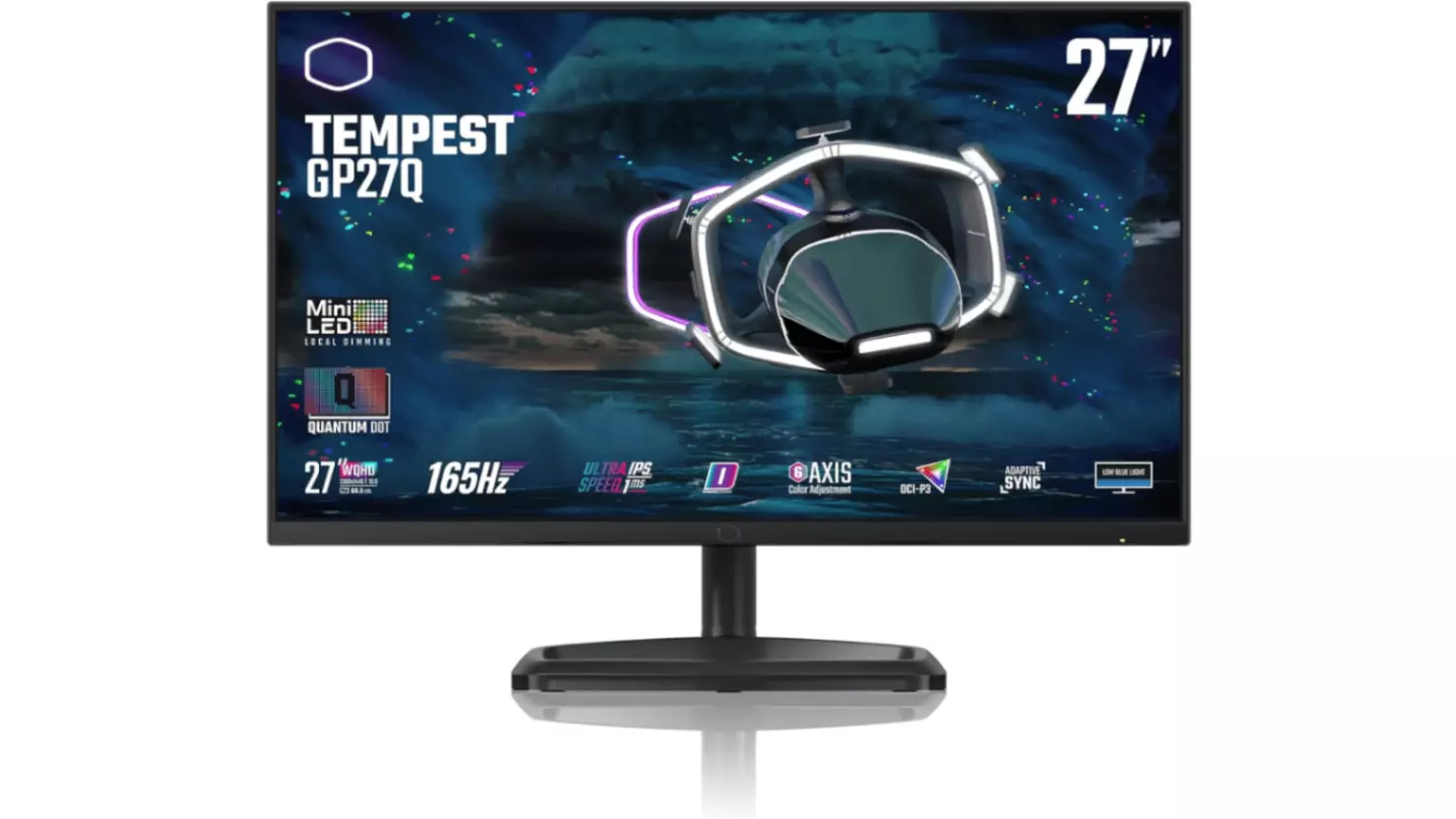
For years, true high-performance HDR was reserved for the most expensive monitors. The Cooler Master Tempest GP27Q breaks that barrier. As a 27 inch mini led gaming monitor from a major PC brand, it brings a reliable 576-zone Mini-LED local dimming system and fantastic brightness to a price point that is accessible to far more gamers, making it a true sweet spot for value.
Pros:
- Brings high-end HDR performance to a budget-friendly price.
- Reliable performance from a major PC brand.
- Good 576 dimming zones for its price class.
Cons:
- Fewer dimming zones than premium 4K models.
- IPS panel contrast isn't as deep as a VA (but has faster response).
Ready to make the jump to Mini-LED without emptying your wallet? The Cooler Master Tempest is the smart choice. It delivers the bright, punchy, high-impact HDR visuals that make this technology so exciting, but at a price that’s hard to beat. This is the best bang-for-your-buck on the list.
Get the full specs and check the latest price [Click here] to upgrade your game.
Best 1440p "Speed" OLED: Alienware AW2725DF
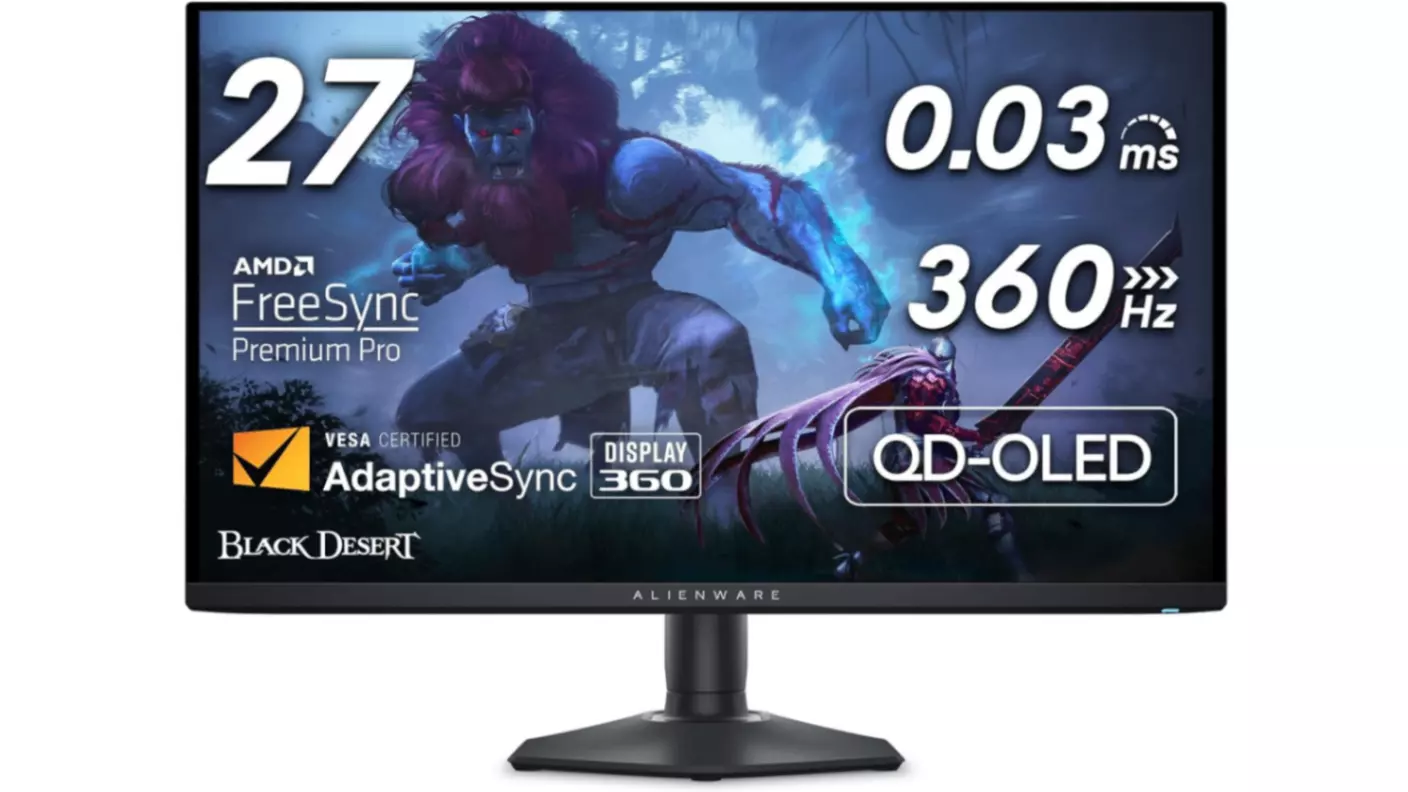
For the competitive gamer, speed is everything, and the Alienware AW2725DF is arguably the best oled gaming monitor for it. As a top-tier oled monitor 1440p model, it is built for one purpose: to be one of the fastest, clearest gaming monitors on the planet. Combining a 1440p resolution with a mind-boggling 360Hz refresh rate on a QD-OLED panel, it’s a top-tier choice from one of the most trusted brands in gaming.
Pros:
- Blazing-fast 360Hz refresh rate for elite competitive gaming.
- All the contrast and instant response time benefits of a QD-OLED panel.
- Excellent brand reliability and warranty (Dell/Alienware).
Cons:
- The 1440p is less crisp for cinematic games than 4K models.
- A (very low) theoretical risk of burn-in over its lifespan.
For the competitive player, this is your new secret weapon. The Alienware AW2725DF combines the perfect, inky blacks of OLED with a blazing-fast 360Hz refresh rate. The result? Unbeatable motion clarity. You get the competitive edge of instant response time with the visual 'pop' of QD-OLED.
Stop losing to ghosting and see the specs on your new advantage [Click Here].
What is Mini-LED? The Brightness Champion

So, what is better mini led or oled? To answer that, let's start with the brightness king. Think of a standard LCD monitor as being lit by a handful of lightbulbs behind the screen. A Mini-LED monitor takes that concept and puts it on steroids. Imagine replacing those few lightbulbs with thousands of incredibly tiny LEDs.
This massive array of lights is the backlight, and it's divided into hundreds, or even thousands, of "local dimming zones." These zones can be controlled independently, allowing one part of the screen to be brilliantly bright while another part is almost completely dark. This technology is a massive evolution from older full array led monitor displays, allowing for much finer control. This is how a Mini-LED monitor creates such impressive contrast and avoids the washed-out, grayish blacks of older LCDs.
- Pro: It can get incredibly bright. This is the signature feature of Mini-LED. This raw power is amazing for HDR games. Explosions, spells, and sunlit skies look intensely realistic and bright, creating a visual impact that is hard to overstate, especially in a well-lit room.
- Pro: It has great black levels. While not perfect, the ability to dim specific zones means dark scenes in games have real depth and richness, a massive step up from traditional displays.
- Pro: It has zero risk of burn-in. Because it's still an LCD panel at its heart, there is no risk of permanently retaining static images. This makes a mini led monitor a fantastic, worry-free choice for gamers who play titles with static HUDs for hours on end or use their PC for productivity.
What is OLED? The Contrast King

Now for the other side of the oled vs mini led debate. OLED technology works in a completely different, almost magical way. Think of each individual pixel on the screen—all eight million of them in a 4K display—as its own microscopic, self-contained light bulb. Each one can produce its own light and color, and crucially, it can turn itself completely off.
When an OLED pixel needs to be black, it emits zero light. This is what creates "true black" and gives OLED its legendary "infinite" contrast ratio. A Mini-LED still has to block a powerful backlight, and a tiny amount of light inevitably bleeds through. An OLED doesn't have this problem, which gives it a unique, almost three-dimensional picture quality in the right environment.
- Pro: It delivers perfect, infinite contrast. This is OLED's superpower. In a dark room, the difference is night and day. Atmospheric horror games, space exploration titles, and moody cinematic adventures look breathtakingly immersive, with blacks that are truly black.
- Pro: It has instant pixel response time. Because there's no liquid crystal to physically move, an OLED pixel changes state almost instantly (typically 0.03ms). This fully eliminates motion blur and “ghosting,” delivering the sharpest, clearest image possible in fast motion, perfect for competitive gaming.
- Con: There is a (low) risk of burn-in. This is the classic OLED concern. While modern OLED care technologies have made this much rarer, the risk is not zero. If a still remains up for thousands of hours it can also leave a permanent ghost image.
Head-to-Head: Mini-LED vs. OLED Comparison
To make the choice as clear as possible, here’s a direct, side-by-side comparison of the two technologies on the features that matter most to gamers.
| Feature | Mini-LED | OLED | The Winner Is... |
| Brightness (HDR) | Excellent. Can get much brighter, making HDR pop in any room. | Good. Not as bright, which can be a limit in sunny rooms. | Mini-LED |
| Contrast (Blacks) | Very Good. Creates deep blacks with local dimming. | Perfect. Infinite contrast. Black is truly black. | OLED |
| Response Time | Excellent. Modern panels are very fast. | Instant. No motion blur. | OLED |
| Burn-In Risk | Zero. None. | Low. A small risk exists with static images over time. | Mini-LED |
| Price | Good. Generally more affordable and more options are available. | Fair. Tends to be more expensive for comparable specs. | Mini-LED |
The Verdict: Who Should Buy Which Monitor?
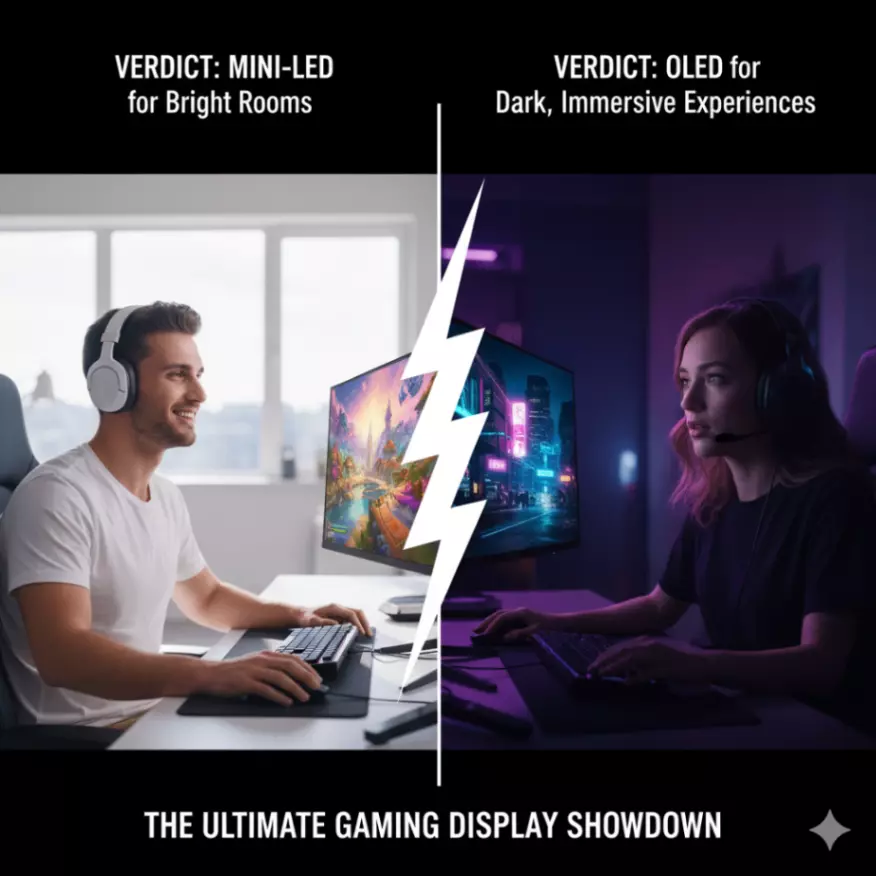
Now that you know the technology, the decision is a lot easier. It really depends on what you value and on your gaming setup.
You Should Buy a Mini-LED Monitor IF...
- ...you game in a bright room. If you’ve got sun-drenched windows, the higher brightness of a Mini-LED will slice through the glare and provide a far more vivid image.
- ...you want the brightest, most impactful HDR experience. If your top priority is seeing those searingly bright explosions and blindingly realistic sun effects in HDR, Mini-LED delivers more raw power.
- ...you use your monitor for both work and play and are worried about burn-in. If your screen will display static elements like the Windows taskbar, browser tabs, or code for hours a day, a Mini-LED is the 100% safe, worry-free choice.
You Should Buy an OLED Monitor IF...
- ...you game in a dim or dark room. This is where OLED truly shines. In a dark room, its perfect blacks lend a depth and immersion that nothing else can touch.
- ...you are a "pixel purist" who demands perfect black levels. If you play cinematic, atmospheric games and can't stand seeing grayish, washed-out blacks in dark scenes, OLED is the only answer.
- ...you are a competitive gamer who needs the fastest response time with zero motion blur. For esports titles, the instantaneous pixel response of OLED delivers the purest picture possible, assisting in your target acquisition.
FAQs
Q1. Is burn-in still a big problem for OLED in 2025?
It’s way less risky than it used to be, but it’s not totally figured out. Modern OLEDs have sophisticated features like pixel shifting, screensavers, and static logo dimming to protect the panel. For most gamers who play a variety of content, it will likely never be an issue. However, is mini led better than oled in this one area? Yeah, it’s the 100% worry-free choice – BIG plus for a good night’s sleep.
Q2. What is better for a bright room, Mini-LED or OLED?
Mini-LED, easily. This is arguably its biggest practical advantage. The superior peak brightness of the best mini led gaming monitor models, whether it's a 27" mini-led monitor or a larger 32-inch version, can power through ambient light and reflections in a way that OLEDs simply cannot, ensuring a rich and vibrant picture even when the sun is out.
Q3. I play fast-paced shooters. Which is better?
OLED. While high-refresh-rate Mini-LEDs are excellent, OLED's instant response time gives it a technical edge. It provides the cleanest and clearest possible image during fast camera pans and when tracking moving targets, completely free of any ghosting or smearing. This superior motion clarity is a tangible benefit in competitive play.
Conclusion: Which Will You Choose?
So, the final verdict on oled or mini led? Awesome to have. There is no single "best" technology, only the technology that is best for you.
The decision boils down to a simple trade-off. Choose Mini-LED for a super-bright, versatile, and completely burn-in-proof monitor that excels in any lighting condition. Choose OLED for its breathtaking, perfect contrast and unbeatable motion speed, which offers the most cinematic and responsive experience possible in a darker room.
Now that you’ve seen the tech and our picks, which monitor will you choose! Let us know in the comments below!

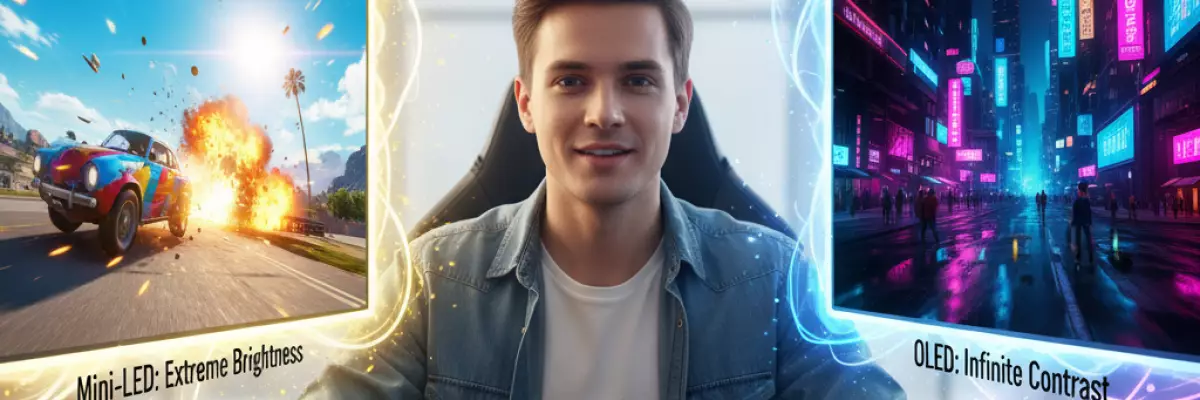



Comments (0)
Please log in to leave a comment.
No comments yet. Be the first to comment!